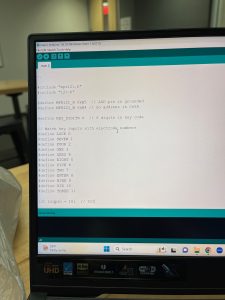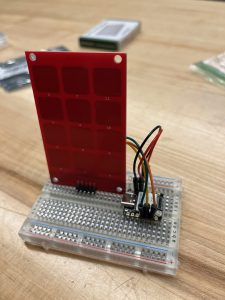This week, we received the components that we ordered and we started sensor testing. After seeing the components in person, and after considering the rough sketch of our PCB that I had made, we decided that we will make our PCB later. For now, we are going to wire everything directly. This is because the PCB is not strictly necessary, and we want to make everything work first.
Since I didn’t have to work on the PCB schematic, I spent my time working instead on the mat software and the React Native app. I made considerable progress with the app, which I show in photos below. Specifically, I made the page that will have the list of songs to choose from. I also made it so that when you click on a song’s image, it takes you to a new page. On this new page, I will make it so that a Bluetooth signal is sent out to the mat.


These photos show the Songs page, and what it looks like when the user hovers on the song choice. The next page is currently empty.
My progress is behind schedule, because I have not had much time to work on the mat software, and I will be traveling this week to attend a visitation day for a Ph.D. program, so I will not have a lot of time this week either. However, I plan to work on the software during Spring Break, because I have nothing else to do then. I hope to finish the app and make significant progress on the software during the break, so that I can start testing on the microcontroller as soon as we get back from break. That will get me back on schedule.
This week, I am going to research how to implement Bluetooth in the app, and I am going to continue to work on the mat software.






